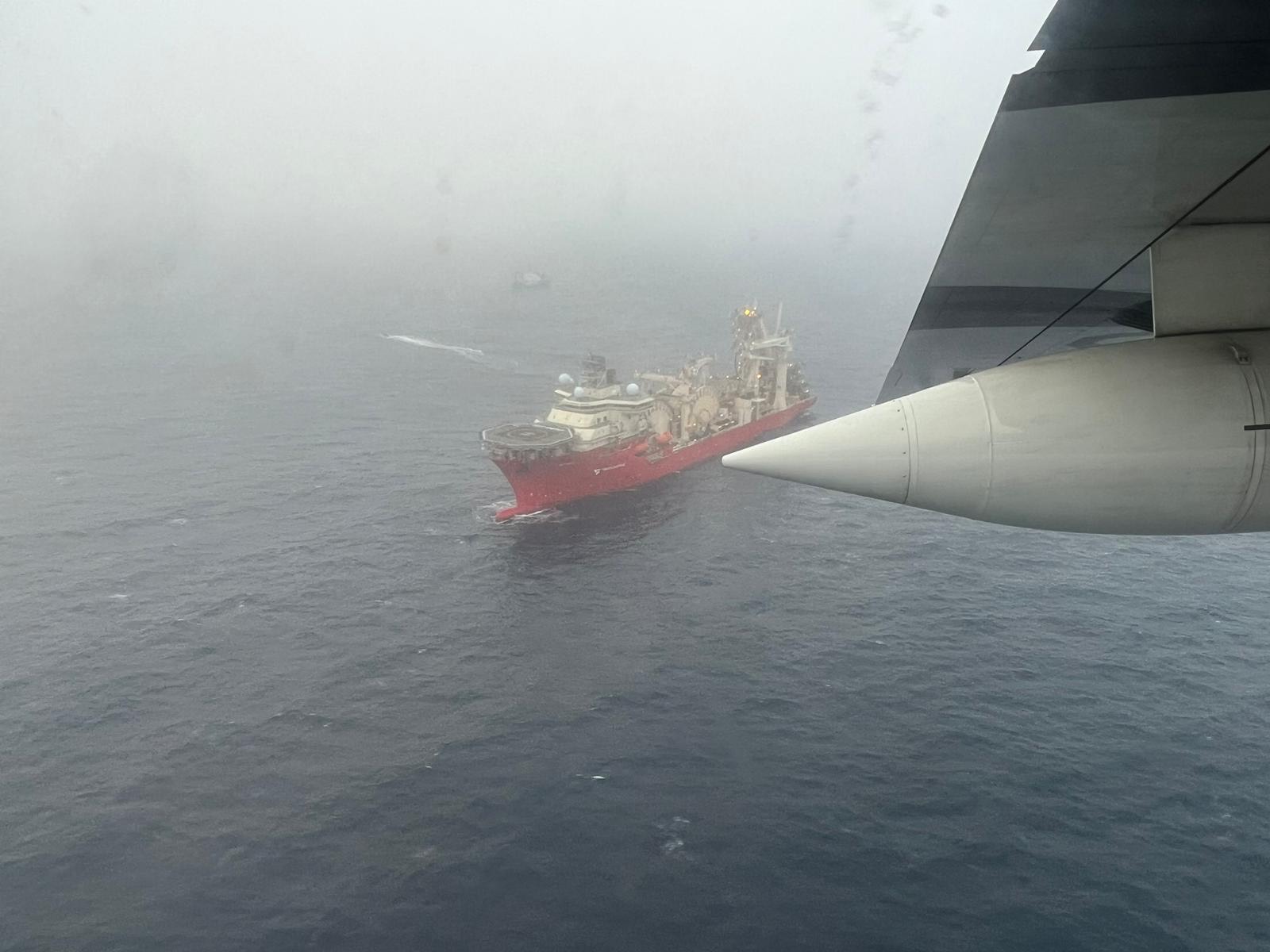
After several days of searching in a remote area of the North Atlantic, the United States Coast Guard has said the submersible that disappeared on its way to the Titanic wreckage suffered a “catastrophic loss” consistent with the implosion of the vessel.
Rear Admiral John Mauger told reporters on Thursday that an unmanned, deep-sea robot had uncovered debris on the ocean floor near the bow of the Titanic.
“The debris is consistent with a catastrophic implosion of the vessel,” he said.
Crews had been racing to find the submersible, named Titan, after it lost communication with tour operators on Sunday about 700km (435 miles) south of St John’s, Newfoundland, on the east coast of Canada.
The company that organised the Titanic expedition, OceanGate, said it believed all five crew members onboard the vessel “had sadly been lost”.
A debris field was discovered within the search area by an ROV near the Titanic. Experts within the unified command are evaluating the information. 1/2
— USCGNortheast (@USCGNortheast) June 22, 2023
Here is what we know:
Deep-sea robot found debris field
On Thursday morning, a remotely operated vehicle (ROV) discovered a debris field close to the wreckage of the Titanic that the US Coast Guard said was linked to the submersible.
The ROVs are outfitted with cameras and travel to depths many other vessels cannot and have been used for undersea exploration for decades.
Mauger said the Titan was found approximately 487 metres (1,600 feet) from the wreck of the Titanic. He said why and when the vessel suffered the “implosion” remained unclear and that the investigation was ongoing.
“I know that there’s also a lot of questions about how, why and when did this happen. And so, those are questions that we will collect as much information as we can on now,” Mauger said.
Who was onboard the submersible?
OceanGate has said Pakistani and British nationals Shahzada Dawood and his son Suleman; British adventurer Hamish Harding; OceanGate’s chief executive and founder Stockton Rush, an American, and French explorer Paul-Henri Nargeolet were in the Titan.
“These men were true explorers who shared a distinct spirit of adventure, and a deep passion for exploring and protecting the world’s oceans,” the company said in a statement on Thursday.
“Our hearts are with these five souls and every member of their families during this tragic time. We grieve the loss of life and joy they brought to everyone they knew.”
British Foreign Minister James Cleverly said the government was supporting the families of those lost onboard the vessel. “Tragic news that those on the Titan submersible, including three British citizens, have been lost following an international search operation,” he said on Twitter.
“The UK government is closely supporting the families affected and expresses our deepest condolences.”
How much oxygen supply did the Titan have?
The 6.7-metre-long (22-foot-long) OceanGate Expeditions vessel had a 96-hour air supply, according to its specifications.
Since it began its descent at 8am (12:00 GMT) on Sunday, the US Coast Guard had estimated oxygen in the submersible would have run out at about 10:00 GMT on Thursday.
How extensive was the search?
The sweeping search covered approximately 25,900 square kilometres (more than 10,000sq miles) of ocean – about the size of the US state of Massachusetts.
On Thursday, the deployment of two specialised deep-sea unmanned vehicles expanded the effort to the ocean’s depths, where immense pressure and pitch-black darkness had promised to complicate any rescue mission.
The French research ship L’Atalante, which carries a remotely operated vehicle (ROV), Victor 6000, was among the vessels sent to help in the search efforts.
The US Coast Guard had several surface vessels searching for the vessel, and the Canadian research icebreaker Polar Prince, which was supporting the Titan, also conducted surface searches with help from a Canadian Boeing P-8 Poseidon reconnaissance aircraft.
The Canadian military also dropped sonar buoys to listen for any possible sounds from the Titan.
Two US Lockheed C-130 Hercules aircraft were conducting overflights, and three C-17s from US Air Mobility Command have also been used to move another commercial company’s submersible and support equipment from Buffalo, New York, to St John’s to aid in the search.
“We will begin to demobilise personnel and vessels from the scene over the course of the next 24 hours,” Mauger from the US Coast Guard said on Thursday afternoon.
“But we’re going to continue remote operations on the sea floor and I don’t have a timeline for when we would intend to stop remote operations on the sea floor at this point.”
What were the noises reported earlier?
Underwater noises were heard on Tuesday and again on Wednesday, although experts had been unable to determine the cause of the sound.
“There doesn’t appear to be any relation between the noises and the location of the debris field on the sea floor,” Mauger said on Thursday.







